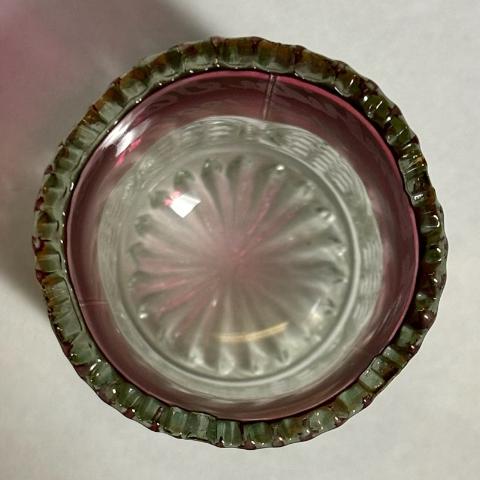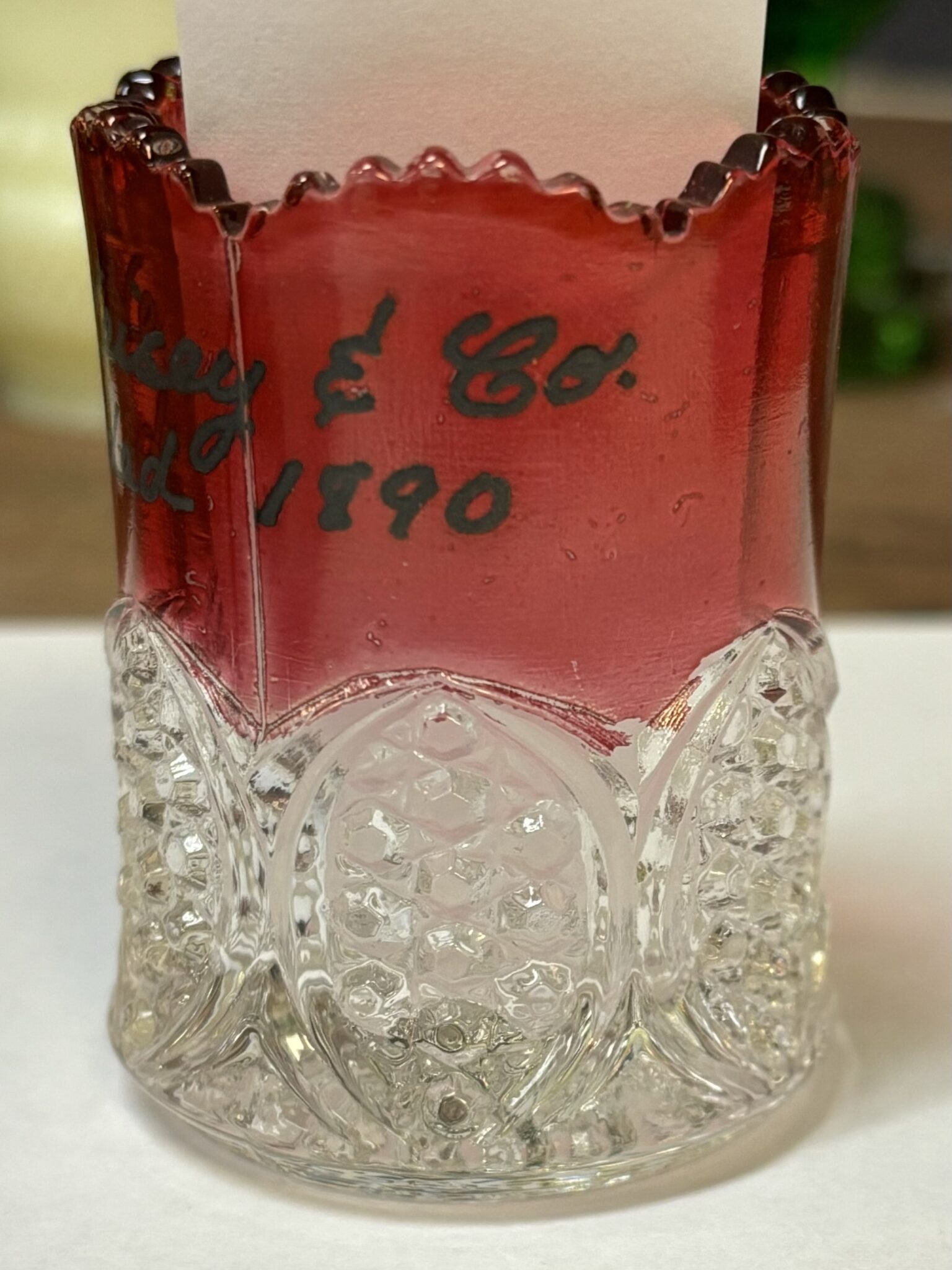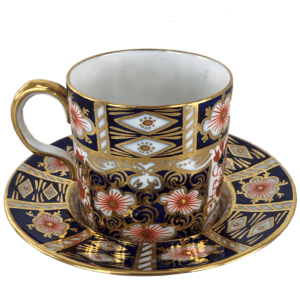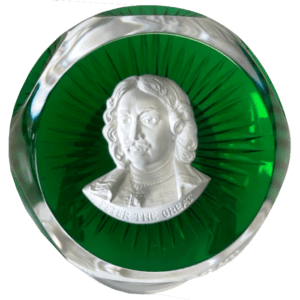Toothpick Holder: Heisey Flash Cranberry and clear Glass:1890
$25.00
The toothpick wasn’t always quite the lowly, mass-produced and disposable piece of wood that we’ve come to know today. Queen Elizabeth once received six gold toothpicks as a gift and would often showcase them. There’s even an anonymous portrait depicting her as an old woman wearing multiple chains around her neck, from which hung a gold toothpick or a case.
Meanwhile, those who couldn’t afford such luxuries resorted to more creative ways of fashioning their own toothpicks. The Romans came up with a particularly clever method of pulling bird feathers, chopping off the quill and sharpening the tip. The technique was passed on to future generations in Europe and eventually carried over to the new world. Over in the Americas, native peoples carved toothpicks from deer bone. And just up north, Eskimos used walrus whiskers.
With the ubiquity of toothpicking tools across the world, it was only a matter of time before an industry was built around them. As small businesses specializing in toothpick manufacturing began to pop up, demand for toothpicks also grew. An American entrepreneur named Charles Forster is probably one of the most well known of toothpick manufacturers. [1826-1901].
[courtesy of
As this industry grew so did the design of toothpick holders that to this day come in many shapes and forms. They became hugely collectible in Victorian times and it was only the invention of floss that started their demise in the 1980’s.
Description











